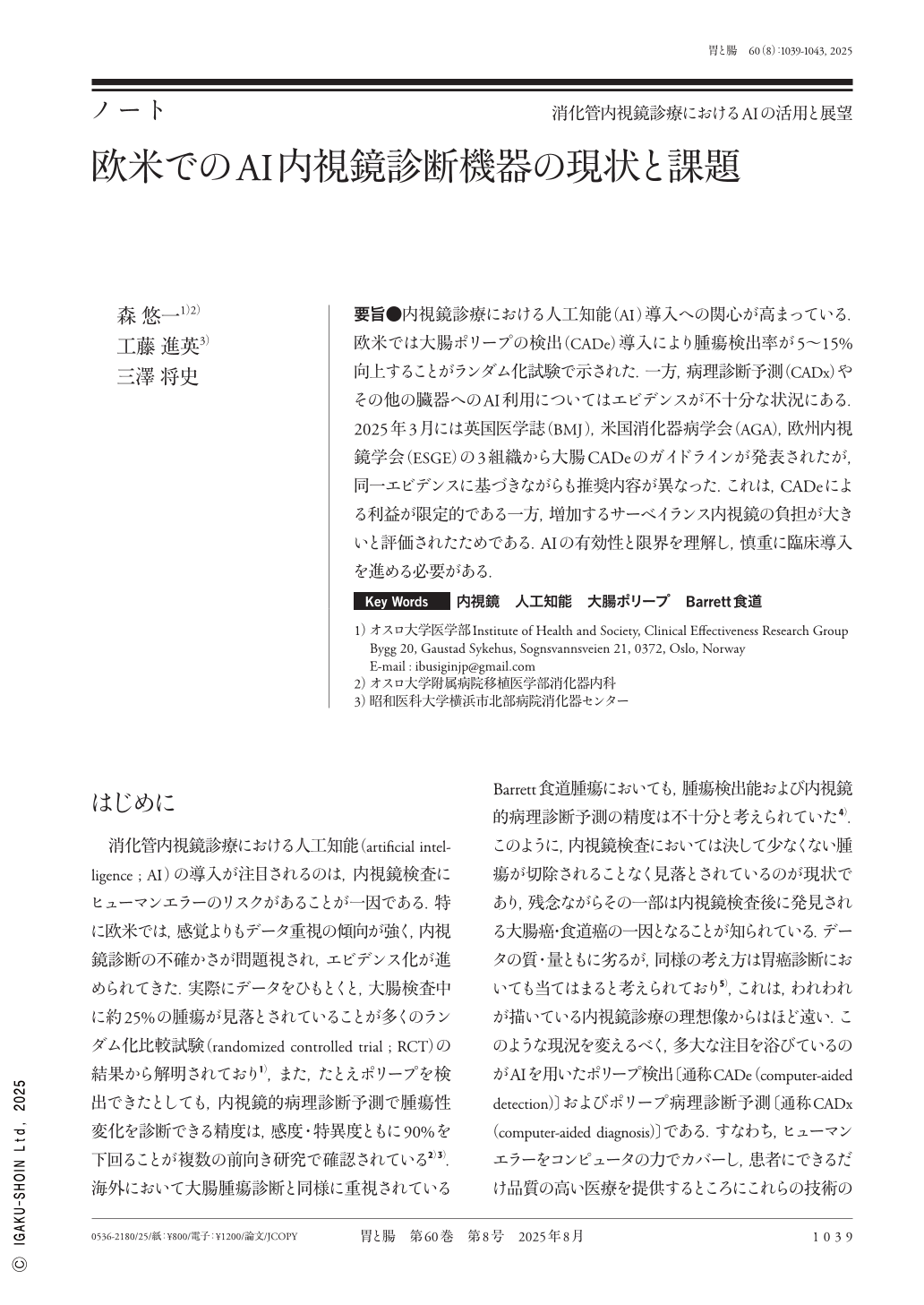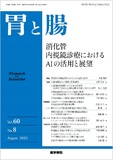Japanese
English
- 有料閲覧
- Abstract 文献概要
- 1ページ目 Look Inside
- 参考文献 Reference
要旨●内視鏡診療における人工知能(AI)導入への関心が高まっている.欧米では大腸ポリープの検出(CADe)導入により腫瘍検出率が5〜15%向上することがランダム化試験で示された.一方,病理診断予測(CADx)やその他の臓器へのAI利用についてはエビデンスが不十分な状況にある.2025年3月には英国医学誌(BMJ),米国消化器病学会(AGA),欧州内視鏡学会(ESGE)の3組織から大腸CADeのガイドラインが発表されたが,同一エビデンスに基づきながらも推奨内容が異なった.これは,CADeによる利益が限定的である一方,増加するサーベイランス内視鏡の負担が大きいと評価されたためである.AIの有効性と限界を理解し,慎重に臨床導入を進める必要がある.
The introduction of artificial intelligence(AI)into endoscopic diagnosis has attracted much attention. In Western countries, randomized trials have shown that the AI implementation for computer-aided detection(CADe)of colorectal polyps can increase the tumor detection rates by 5%−15%. Contrarily, there is insufficient evidence regarding the use of AI for computer-aided diagnosis of colorectal polyps and tumors in other organs. In March 2025, the guidelines for CADe of colorectal polyps were published by the following three organizations:British Medical Journal, American Gastroenterological Association, and European Society of Gastrointestinal Endoscopy. Despite being based on the same evidence, the recommendations varied, stemming from the fact that, although the benefits of CADe are limited, the burden of increased surveillance endoscopy was considered significant. It is essential to understand both the effectiveness and limitations of AI and to proceed cautiously with its clinical implementation.

Copyright © 2025, Igaku-Shoin Ltd. All rights reserved.


